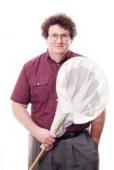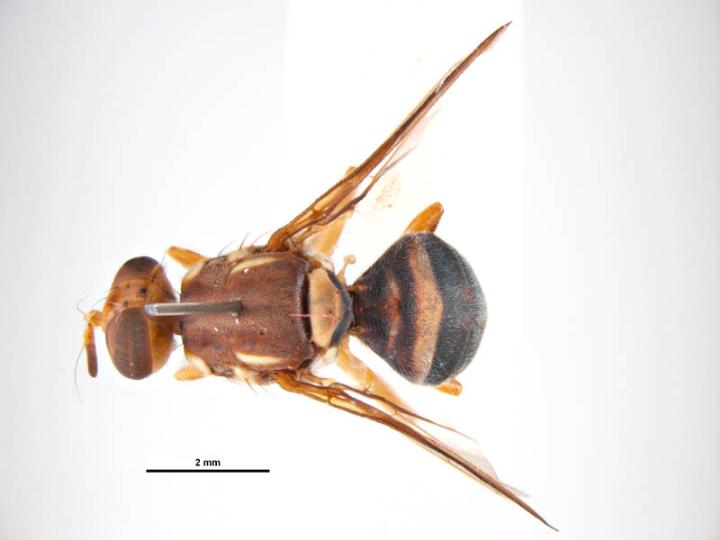fruit fly
Web-based simulation of fruit fly to support biosecurity decision-making
| Publication Type | Journal Article | |
| Year of Publication | 2012 | |
| Authors | Garcia-Adeva, J.J.; Reynolds, M. | |
| Journal Title | Ecological Informatics |
Trapping to prove area freedom (Fruit fly trapping project) - Final Report
| Publication Type | Report | |
| Year of Publication | 2011 | |
| Authors | De Lima, F.; Poogoda, S.; Smallridge, C.; Caldwell, A.; Reynolds, O.; van der Rijt, V.; Clark, S.; Orchard, B. | |
| Pages | 207 |
Developing female lures for improved market access - Final Report
| Publication Type | Report | |
| Year of Publication | 2011 | |
| Authors | Lindhout, K.; Dalton, S.P.; Jessup, A.J.; Reynolds, O.; Spohr, L.J.; Harris, A.; De Lima, C.P.F.; Poogoda, S. |
The average gross value of Australian Horticulture over the past three years is estimated at over $7 billion per year. Most of this is not consumed close to the source, but is transported to domestic or international markets. Access to markets thus underpins the viability of many rural industries. Unfortunately, market access of commodities which are grown in districts exposed to, or potentially exposed to, fruit fly can be highly restricted. Fruit flies are plant pests of global significance, with adult fruit flies laying their eggs into ripe fruit and the resultant maggots feeding in the fruit flesh. As fruit fly eggs and early instar maggots can be transported in apparently healthy fruits, they are of major concern as plant biosecurity threats for nearly all nations.
In Australia, fruit flies represent the single most significant phytosanitary barrier for domestic and international market access for fruit and vegetable commodities and so directly impact on the viability of many horticultural industries. Of almost $780million of horticultural product exported from Australia during the calendar year 2004, known fruit fly hosts accounted for more than $370million, predominantly citrus ($157million), fresh grapes ($85million), peaches and nectarines ($17million) and apples ($16 million).
What is the biosecurity problem?
Single step disinfestation treatments such as heat, cold or post-harvest chemical application are frequently used to meet market access requirements for fruit flies. However, heat and cold treatments can be detrimental to crop quality for some commodities, while chemical treatments (ie dimethoate), currently used in Australian and New Zealand markets, are likely to be severely restricted in the near future due to toxicological concerns. This means that new approaches to gaining market access for growers need to be developed. A systems approach, which relies on a number of risk reduction steps, may provide a tool to help meet fruit fly phytosanitary requirements.
The main outputs of this project are to:
- review the published literature on the ecology and biology of Bactrocera tryoni, concentrating particularly on those aspects relevant to pre-harvest control, and prioritise key gaps of knowledge requiring further research, and
- carry out an investigation of Queensland fruit fly (Q-fly) movement at different scales to determine where flies causing infestations are coming from, and develop strategies for better deployment of male annihilation technique blocks and protein baits in an integrated approach to pre-harvest control of Q-fly which reduces the risk of infestation in produce.
Upon achieving these outputs, it is anticipated that objectives of subsequent work (beyond the scope of this project) would be:
- test the results in Victoria with the Victorian Department of Primary Industries staff where Q-fly invades cropping regions each summer
- build an integrated package for effective Q-fly pre-harvest control based on modelling using the data from the project that will predict the effectiveness of pre-harvest control and can be used as a component in a systems approach to negotiate market access. This could incorporate results from CRC30039 - Fruit Fly Area Freedom and also the models being developed in Australian Centre of Excellence for Risk Analysis projects for market access, and
- investigate ecology and biology questions on Q-fly identified as gaps in this project.
Who will be the end-users of this research?
End users will be growers, as well as Biosecurity Australia when needing scientific data to support market access arguments for horticultural
PROJECT LEADER

Dr Anthony Clarke
Project Leader CRC40088: Pre-harvest fruit fly
a.clarke@qut.edu.au
Phone: 07 3138 5023
Read More
PROJECT DETAILS
Active
Supervisor
Ms Jane Moran
Term
May 2009 – April 2012
Budget
$1,389,685
PROGRAM DETAILS
LOCATION
CORE CRC PARTICIPANTS
SUPPORTING CRC PARTICIPANTS
 The International Symposiums on Fruit Flies of Economic Impor
The International Symposiums on Fruit Flies of Economic Impor
LOCATION
Smart Trap Scoping Study - Final report
| Publication Type | Report | |
| Year of Publication | 2008 | |
| Authors | Robles-Kelly, A.; Morin, L. | |
| Prepared for | Cooperative Research Centre for National Plant Biosecurity | |
| Pages | 12 | |
| Date | 12/2008 | |
| Institution | CSIRO Ecosystem Sciences | |
| City | ACT |
NATIVE PARASITIC WASPS (HYMENOPTERA: BRACONIDAE): A NEW TOOL FOR FRUIT FLY (DIPTERA: TEPHRITIDAE) INCURSION MANAGEMENT IN AUSTRALIA
| Publication Type | Presentation | |
| Year of Publication | 2008 | |
| Authors | Spinner, J.; Kvedaras, O.; Gurr, G.; Jessup, A. | |
| Meeting Name | 3rd International Symposium on the Biological Control of Arthropods |
Bactrocera dorsalis preference for and performance on two mango varieties at three stages of ripeness
| Publication Type | Journal Article | |
| Year of Publication | 2009 | |
| Authors | Rattanapun, W.; Amornsak, W.; Clarke, A. | |
| Journal Title | Entomologia experimentalis et applicata | |
| Volume | 131 | |
| Start Page | 243 |
Synergizing biological control: Scope for sterile insect technique, induced plant defences and cultural techniques to enhance natural enemy impact
| Publication Type | Journal Article | |
| Year of Publication | 2009 | |
| Authors | Kvedaras, O.; Gurr, G. | |
| Journal Title | Biological Control |




.jpg) In Jul
In Jul